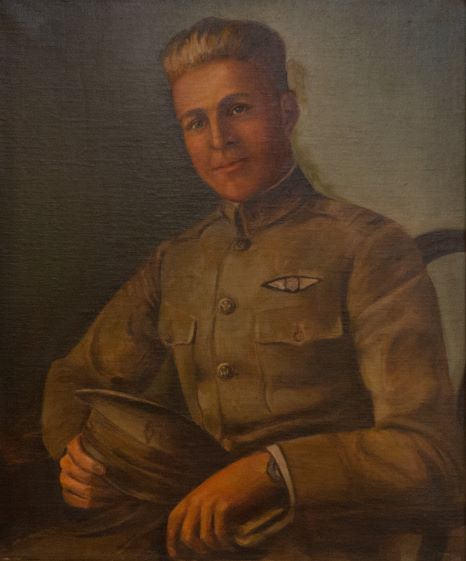Honor the men and women who flew and trained at Luke Field, Arizona, during World War II.
Frank Luke

On 29 September 1918, the leading ace of the American Expeditionary Force was killed in combat in northern France during the last few months of World War I. Lieutenant Frank Luke, Jr. was a 20-year-old, native of Phoenix, Arizona. His parents emigrated from Germany before he was born. He excelled in sports, the rough-and-tumble life of a copper miner, boxed in bare knuckled matches, and taught dancing lessons. On 25 September 1917, Luke enlisted in the Aviation Section of the U.S. Army’s Signal Corps. He underwent ground and flight training in Kelly Field, San Antonio, Texas and Rockwell Field, San Diego, California before earning his wings and commission as a Second Lieutenant in March 1918.
By the time Luke arrived in France in July 1918, World War I was four years old. Primarily, it was an artilleryman’s war. Part of the heavy artillery system of the day was observation balloons. Filled with hydrogen, these balloons were highly flammable and heavily defended both from the ground and in the air. Because of the danger, most Allied fliers shied away from attacking balloons considering them suicide missions.
On 12 September 1918, Luke attacked and destroyed a balloon to receive his first aerial victory credit. He soon received the sobriquet of the Arizona Balloon Buster. He chose to attack at dawn when the balloons were being sent skyward to start the day’s artillery observation or at dusk when the balloons were being hauled down for the night. That way he could camouflage his approach or escape in the dark, depending upon the time of day.
In the beginning, he flew with his close friend, Lt. Joseph Frank Wehner. Wehner would fly cover while Luke attacked the balloons. Six days later, while carrying out that maneuver, Wehner was shot down and killed. Luke turned on the attackers and shot two of them out of the sky. He then turned his attention back to the balloons and downed two of them.
Luke had few friends among the pilots. He was seen as arrogant. He had a tendency to fly alone and he disobeyed orders. His grief over Wehner’s death only deepened his loneliness.
Three days before he died, the Allies began the Meuse-Argonne Offensive, a front-long assault upon the German line. On 28 September 1918, he landed at a French aerodrome instead of returning to his home base at Rembercourt, France. When he arrived at Rembercourt the next morning, the squadron commander refused to believe he had had engine trouble, accused him of going AWOL, and threatened to place him under arrest. Luke then took off without authorization and flew to see his group commander at a forward airfield near Verdun. The group commander cancelled the arrest order.
That evening, Luke took off on his last flight. When he arrived in the area of Dun-sur-Meuse, Luke attacked three balloons. Eight German aircraft attempted to shoot him down, but it was the heavy ground fire that hit him, probably from a hilltop. One round entered his right shoulder and passed through his body. As he looked for a place to land, he strafed a body of German troops, and then landed the aircraft safely in a field near Murvaux, France. He got out of his aircraft, drew his pistol, and fired as German infantry approached. He then died from his wound.
Frank Luke, Jr. was the first Airman to receive the Congressional Medal of Honor. He received it for his exploits, especially for the mission that took his life. After the war, his remains were moved to the Meuse-Argonne American Cemetery and Memorial, east of the village of Romagne-sous-Montfaucon, France. America has bestowed a number of honors on that brave Airman since his death. Not the least of which was Luke Field, Arizona, named in his honor.
Updated 30 July 2022
